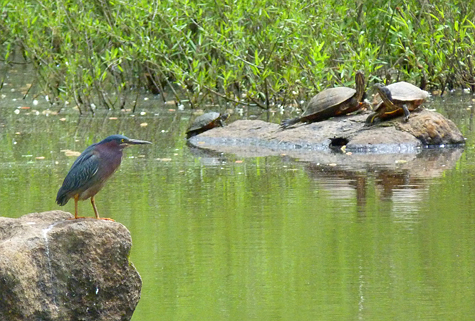
From April thru September Green Herons are in our Wetlands nearly every day, if not every day. However, they’re not always visible, they spend much of their time hidden from view silently perched just above the water’s surface or quietly stalking fish, tadpoles, or insects among the willow branches and roots. But, every once in a while I hear a loud squawky “skew” coming from the brush or catch a glimpse of one of these small herons out in the open.
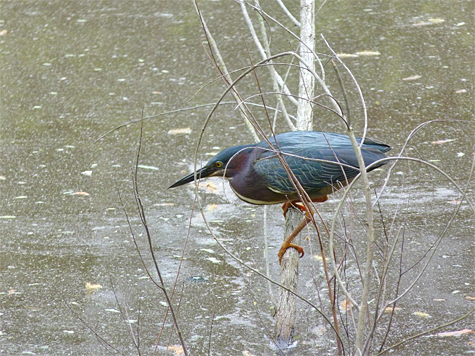
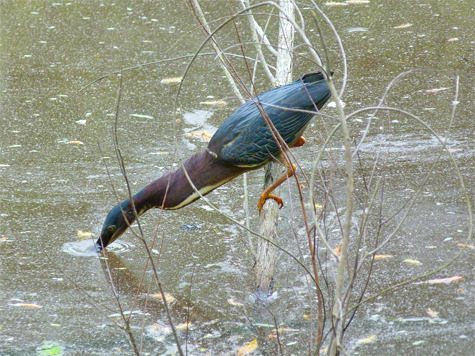
Unfortunately the heron above missed its target. There will, however, be many more opportunities for this heron, we have lots of small fish and tadpoles in our Wetlands.
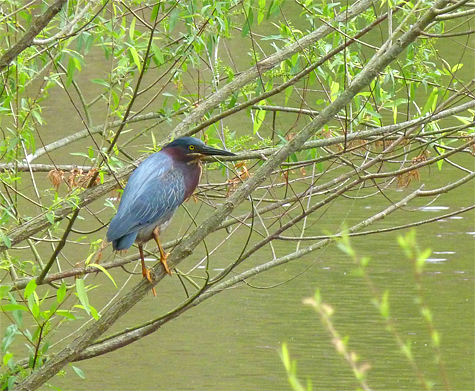
I’m going to be on the lookout for nesting here at the Museum this season. I spotted some activity near the Bungee Jump (Take Off) in Catch the Wind last year and suspect breeding.
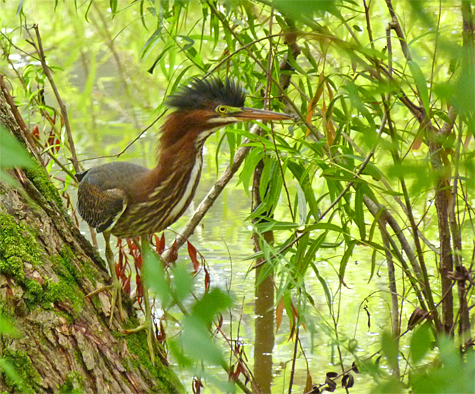
A Great Blue Heron’s nest is usually very easy to spot, a huge mass of sticks and twigs high among the treetops. And there’s typically more than one, often many herons in a colony. Green Herons don’t necessarily nest in colonies and their nest is often well concealed in a dense shrub, thicket, or tangle of vines.
Although small for a heron, Green Herons are large in comparison to say a catbird or red-winged blackbird. The relatively large size may lead one to think that their nests would be easy to locate. I can tell you from experience, that’s not always the case. Until the young begin to grow in the nest, squawking and begging for food, the adult birds can be quite discreet around the nest and it’s not uncommon to walk right past one and not know it’s there.
If, however, you’re in the area of the nest often enough, you’re bound to see the birds coming and going, giving away the position of the nest. And that’s what I’m going to be looking for this season, that is, if I can find the time between all of the other activities going on. So much happens at this time of year!
Watching them use items to trick fish to get nearer to them was probably the most interesting thing I have ever seen. It was remarkable.
What Jill is referring to is that Green Herons sometimes use bait to capture fish. I’ve seen them use everything from twigs, plant fiber, feathers, to both dead and live insects.
I once saw a green heron catch a green darner (dragonfly), hold the dragon in its bill and bend its abdomen. Having seen these herons catch and eat dragonflies before, I assumed this darner would be going down the gullet as well.
I was wrong. The heron dropped the crippled ode out in front of itself and into the water. Almost immediately the wriggling dragon attracted small fish to which the heron quickly dispatched.